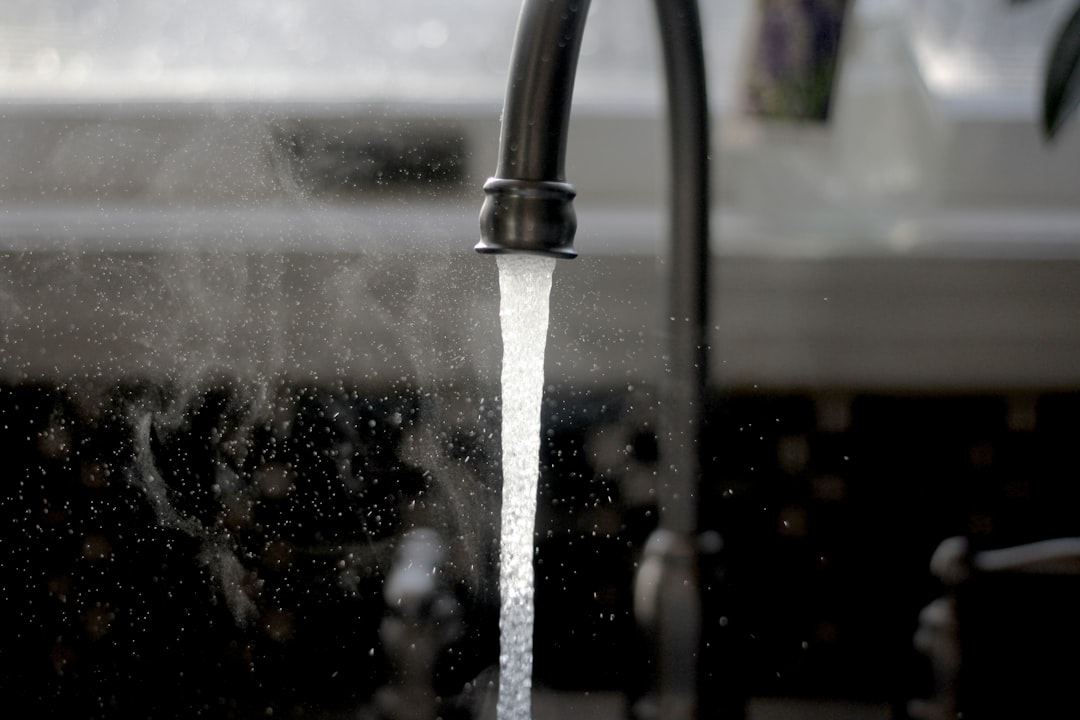Table of Contents
- Introduction
- Overview of professional plumbers and their services
- Importance of plumbing maintenance and inspections
- Common plumbing issues and how to address them
- Emergency plumbing services and response times
- Advancements in plumbing technology and tools
- Cost considerations and estimates for plumbing services
- The role of certifications and licenses in plumbing
- Customer satisfaction and guarantees in plumbing services
- Conclusion
- Frequently Asked Questions
Introduction
When it comes to keeping our homes running smoothly, the importance of professional plumbers cannot be overstated. Picture this: a burst pipe in the middle of the night, flooding your living room, or a clogged sink that disrupts your entire day. These scenarios often lead to panic and chaos, but they also highlight the invaluable services that skilled plumbers provide.
In an age where DIY solutions are tempting, the truth is that complex plumbing issues require expert knowledge and specialized tools. Professional plumbers are the unsung heroes of home maintenance, ensuring our essential systems function seamlessly. They possess not just technical skills, but also an understanding of the intricacies of plumbing systems that can save homeowners time and money in the long run.
Whether it’s installing new fixtures, repairing leaks, or conducting routine inspections, the contribution of professional plumbers extends far beyond mere pipe repairs. In this article, we’ll explore why investing in professional plumbing services is not just a necessity, but a smart decision for every homeowner.
Overview of professional plumbers and their services
Professional plumbers are skilled tradespeople who specialize in the installation, repair, and maintenance of plumbing systems. Their expertise is crucial for both residential and commercial properties, addressing issues related to water supply, drainage, and sewage systems.
These professionals are equipped to handle a wide range of services, including fixing leaks, unclogging drains, installing fixtures such as sinks and toilets, and laying down pipework. They also ensure that plumbing systems comply with local building codes and regulations, which is essential for safety and functionality.
In addition to emergency repairs, many professional plumbers offer routine maintenance services to prevent future problems. These may include inspections, video camera assessments of pipes, and regular drain cleaning.
Many plumbers also provide specialized services such as water heater installation and repair, backflow prevention, and pipe insulation. Hiring a licensed professional plumber is advisable, as it guarantees that the work will meet industry standards, thereby ensuring long-term reliability and peace of mind for property owners.
Importance of plumbing maintenance and inspections
Regular plumbing maintenance and inspections are crucial for the longevity and efficiency of any plumbing system. Over time, pipes can become clogged with debris, leading to reduced water flow and potential leaks. By scheduling routine inspections, homeowners can identify issues before they escalate into costly repairs.
Furthermore, regular maintenance can help in preventing water damage, which may arise from unnoticed leaks or bursts. This not only protects the integrity of the home but also safeguards personal belongings and enhances overall safety.
Another significant aspect of plumbing maintenance is the fact that routine checks can ensure compliance with local plumbing codes and regulations. Many municipalities have specific requirements for plumbing installations and inspections, and adhering to these regulations can prevent fines or legal complications.
Additionally, well-maintained plumbing systems operate more efficiently, which can lead to lower utility bills. Investing in regular plumbing maintenance is not just about immediate benefits; it also contributes to the long-term health of the home, providing peace of mind for residents.
Common plumbing issues and how to address them
Common plumbing issues can range from minor inconveniences to major headaches for homeowners. One prevalent problem is a clogged drain, often caused by the accumulation of hair, soap, and food particles. To address this, homeowners can use a plunger or a drain snake to clear the blockage. If these methods fail, a professional plumber may be needed.
Another frequent issue is a leaky faucet, which can waste a significant amount of water over time. This can often be fixed by replacing a worn-out washer or O-ring. If the leak persists, it may indicate a more serious plumbing issue that requires expert attention.
Running toilets are also a common concern, usually resulting from a faulty flapper valve or a malfunctioning fill valve. Adjusting or replacing these components can help restore proper function. Lastly, low water pressure can signal a build-up of mineral deposits in pipes or issues with the municipal supply. Addressing this may require professional assessment and cleaning of the plumbing system.
Emergency plumbing services and response times
Emergency plumbing services are essential for addressing urgent issues that can arise unexpectedly, such as burst pipes, overflowing toilets, or severe leaks. These situations can cause significant damage if not handled promptly, making a rapid response critical. Most professional plumbers offer 24/7 emergency services, which ensures that help is available at any time, day or night. Response times can vary depending on the plumber’s location, the time of day, and the nature of the emergency. In many cases, reputable plumbing companies aim to arrive within an hour of receiving a call.
During an emergency, it is crucial to have contact information for a trusted plumber readily available. Quick intervention not only mitigates the potential for extensive property damage but also helps restore normalcy as swiftly as possible. Homeowners should look for plumbing services that prioritize efficient communication and fast action during emergencies. By choosing licensed and insured professionals, customers can have peace of mind, knowing that their plumbing emergencies are being handled by skilled technicians who are well-equipped to deal with a wide range of issues.
Advancements in plumbing technology and tools
The plumbing industry has witnessed significant advancements in technology and tools over the past few decades, revolutionizing the way professional plumbers operate. One key development is the introduction of trenchless technology, which allows for pipe replacement and repair without the need for extensive excavation. This greatly reduces the disruption to landscapes and infrastructure. Moreover, the use of high-definition cameras for pipe inspections enables plumbers to accurately diagnose issues within pipes, identifying blockages or leaks without invasive procedures.
Additionally, smart plumbing technologies are gaining traction, with systems that monitor water usage and detect leaks in real-time. These innovations not only enhance efficiency but also help homeowners save on utility bills and prevent water damage. Advanced materials, such as cross-linked polyethylene (PEX), have become popular due to their flexibility, resistance to corrosion, and ease of installation.
Furthermore, specialized tools like automatic pipe cutters and powerful drain cleaners are changing the landscape, allowing plumbers to complete tasks more efficiently and effectively. As these technologies continue to evolve, the plumbing profession is becoming more efficient and environmentally friendly, paving the way for a more sustainable future.
Cost considerations and estimates for plumbing services
When considering plumbing services, cost is an essential factor that can vary widely based on several elements. These include the nature of the job, the complexity of the issue, and the time required to complete the work. For simple repairs, such as fixing a leaky faucet, homeowners might expect to pay a lower fee, while more extensive services, such as installing new plumbing systems, can require a significant investment.
Plumbers often base their estimates on hourly rates, which can range depending on location and experience. Additionally, there may be flat-rate fees for specific services, ensuring transparency in pricing. Homeowners should also consider any potential additional costs, such as materials or parts required for repairs. It is advisable to obtain multiple estimates from different professionals to ensure competitive pricing.
Understanding these cost considerations can help make informed decisions when hiring a plumber, resulting in a better overall experience and ensuring that plumbing issues are addressed effectively and efficiently.
The role of certifications and licenses in plumbing
The role of certifications and licenses in plumbing is crucial for ensuring that plumbers are qualified to perform their work safely and effectively. Certifications indicate that a plumber has undergone extensive training and has demonstrated their competence through examinations and practical assessments. These qualifications serve as a benchmark for skill levels, enabling homeowners and businesses to make informed decisions when hiring plumbing professionals.
Licenses are typically required by local or state governments and validate that the plumber meets all legal requirements, including adherence to building codes and regulations. Having a valid license protects both the plumber and the client, ensuring that the work performed complies with safety standards. Additionally, licensed plumbers are often required to carry insurance, which adds a layer of security for customers in case of accidents or damages during the plumbing process.
Beyond just legality, certifications and licenses demonstrate a plumber’s commitment to their craft, continuous learning, and professional integrity. This professionalism fosters trust with clients, making it essential for those seeking reliable plumbing services.
Customer satisfaction and guarantees in plumbing services
Customer satisfaction is paramount in the plumbing industry, as it directly influences the reputation and success of plumbing services. Professional plumbers understand that ensuring customers are happy with the work performed is crucial for building long-term relationships and securing repeat business. This often involves clear communication, prompt service, and high-quality workmanship.
To further enhance customer satisfaction, many plumbing companies offer guarantees on their services. These guarantees may cover a range of aspects, from the quality of materials used to the workmanship itself. When customers know their plumbing issues will be addressed promptly and effectively, it fosters trust and confidence in the service provider.
Additionally, effective customer service includes being responsive to inquiries and concerns, maintaining transparency regarding pricing, and providing professional advice. Many companies also encourage customer feedback to continually improve their services. By prioritizing customer satisfaction and offering guarantees, professional plumbers not only elevate their service standards but also contribute to a more trustworthy and reliable industry overall.
Conclusion
In conclusion, the importance of hiring professional plumbers cannot be overstated. From routine maintenance to handling emergencies and addressing complex plumbing issues, these skilled tradespeople play a vital role in ensuring the functionality and safety of our homes. By leveraging their expertise, advanced tools, and commitment to quality, professional plumbers not only tackle immediate concerns but also help homeowners avoid costly repairs in the future. Regular inspections and maintenance contribute to the longevity of plumbing systems and enhance overall efficiency, leading to lower utility bills. Furthermore, with the plumbing industry constantly evolving through technological advancements, opting for licensed and certified professionals ensures compliance with regulations while providing peace of mind for homeowners. So, if you’re facing any plumbing issues, whether minor leaks or urgent emergencies, don’t hesitate to contact a trusted plumbing service. Call 573-555-2121 today to get the assistance you need!















